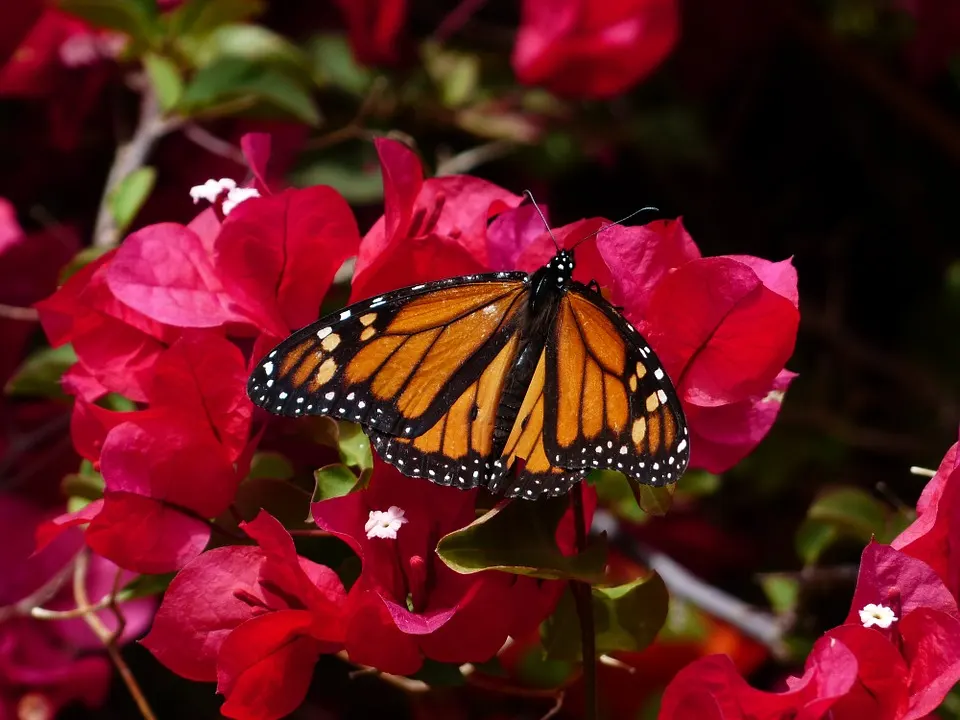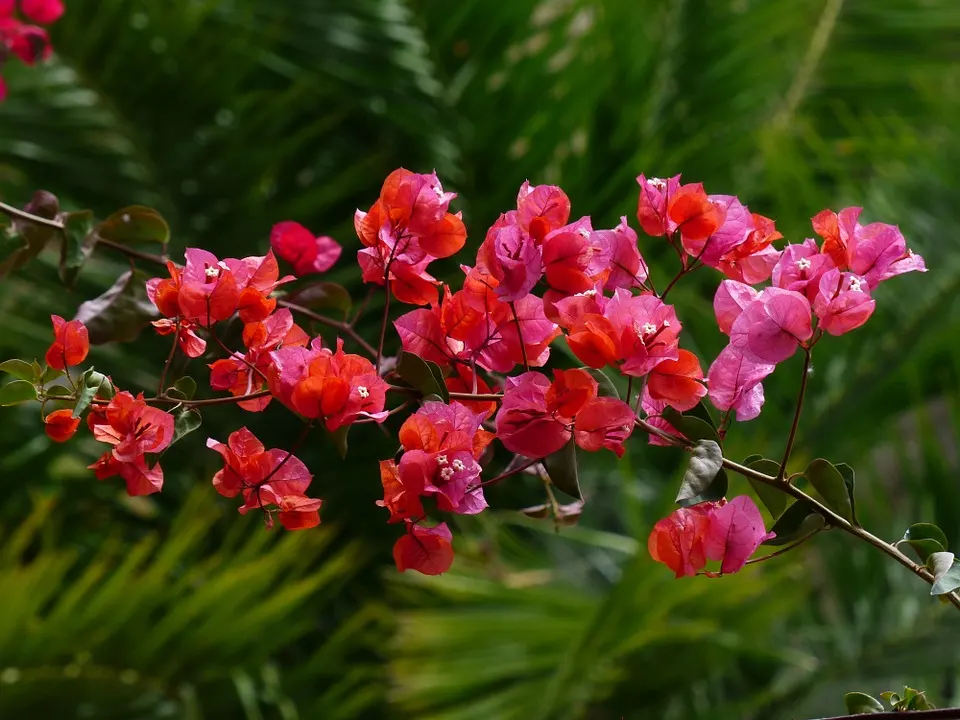What To Expect During The Bougainvillea Flowering Season
The flowering season is such an exciting time of year. With all the floral plants and trees in your garden in their Sunday best, there really is no time of year more beautiful, especially where bougainvillea is concerned. The vibrantly colorful bracts of the beautiful bougainvillea are such a stunning display of natural wonder.
Below, we’ll tell you all you need to know about this wondrous shrubs’ flowering season and what to expect. The first thing to expect, though, is color; colors more striking than you’ve ever seen before.
Color Theory
Color has always played a massive part in the human experience. More than the basics, like red is the color of passion and blue the color of sadness; the human soul seems to resonate at different frequencies with different colors. Surrounding yourself with certain colors can be a form of therapy. Yellow, for instance, is the perfect color to have around you in abundance if you’re feeling a little blue. Just as each color has another that complements it, colors can complement our emotional state.
Colors also help us create a certain vibe in environments we bring them into. Think of the blue and white theme of some traditional Greek villages. Even just the thought of the muted pastel blues and crisp but rustic white walls against the backdrop of authentic Mediterranean culture and cuisine provide a calming effect. These white walls with softened blue doors and shutters are coincidentally one of the most well-known places to find magenta bougainvillea growing naturally among man’s creations.
Even more than emotions or creating the perfect ambiance, color serves an even deeper purpose if you look at various arcane arts. Colors express the journey towards the Great Work in alchemy. Different colors represent different stages of progression and, for some, enlightenment. Different schools of mysticism place equal importance on color. The chakras within the human body are assigned specific colors within the human body, and each one represents a particular aspect of the human condition.
It is believed by many people that we can bring our greatest dreams and desires into our lives by bringing certain colors into our space. The correlation between color and the more mystical experiences of human life having been well established, let’s turn our attention to the colors of the bougainvillea.
The Colors of Bougainvillea Blooms
Bougainvilleas bloom in various colors and bract variations. For an even more striking picture, plant a few variegated varieties of bougainvilleas in your garden. The stunning multi-toned foliage paints the prettiest picture, especially when the sun is dancing around them while the beautiful bracts are in full bloom. No matter which color variety you choose, bougainvilleas are generally more luminescent than most flowering shrubs and give an almost psychedelic richness to your garden.
Red
Red represents vitality, passion, and survival, and some would argue it affects all three. The color red serves to ground us and keep us stabilized. As a result, red bougainvilleas are a natural paragon of strength, stability, and vitality. We all want our lives to be more stable, right? Sometimes called San Diego Red, Scarlet O’Hara is the most popular variant of red bougainvillea. Scarlett O’Hara bougainvilleas will add warmth to any garden with their deep red color.
Orange
Orange is thought to symbolize sensuality, creativity, free expression, and emotional wellbeing. The most commanding of the orange bougainvillea varieties is the Orange King. There are many shades of orange that this bougainvillea blooms in, making it one of the most diverse varieties. Orange King bracts range from a bright orange with a pink undertone to a dusty orange with a deep bronze undertone. Occasionally, the base of the bracts show hints of red.
Yellow
Yellow is a popular color for clothing, interior decor, and landscaping because it has a sun-like warmth. There is nothing more beautiful than a yellow bougainvillea planted proudly in your garden. In addition to youth, yellow represents birth, new beginnings, and rebirth.
Among the best performing yellow bougainvillea varieties is California Gold. Most California Gold bracts have a golden hue, although they can also be lighter, paler yellow shades.
Purple
Purple is a color that evokes balance and spirituality and is often associated with royalty and regality. Depending on your spiritual outlook, purple represents our connection to our higher selves or higher powers.
There are relatively few purple bougainvillea varieties, and they might be the most enigmatic. Purple Queen, also called Moneth Purple Queen, is the most well-known variety. This variety features rich, deep purple bracts with classic light flowers. Most people go their entire lives without seeing a true purple bougainvillea bloom, so catching sight of these rare beauties is an incredibly special experience.
Magenta
When we hear the term bougainvillea, we tend to think of magnificent magenta bracts. This is one of the most commonly found and most popular bougainvilleas. Among the magenta bougainvillea varieties, Crimson Jewel is the most striking. It is an excellent addition to any garden. This stunning bloom will infuse your garden with a sense of transcendental peace.
Bougainvilleas not Blooming? Here's Why
What if it’s blooming season, and your bougainvillea is nothing but foliage? How can you make sure you get the most out of your bougainvilleas flowering season? Here are a few reasons why your bougainvillea might not be blooming to its full potential and how to fix it.
For a plant to thrive, it should have certain needs met. As a result, there are several reasons why your bougainvillea isn’t as happy where it is as it could be. With the right knowledge, most of these issues can be resolved.
Damp Soil
Bougainvilleas thrive in warm, dry climates. Furthermore, they prefer drained soil that doesn’t get bogged down with water. Soils that retain water are extremely stressful for plants like bougainvillea because their roots are constantly in water, and bougainvilleas do not like wet feet. Plants have a hard time getting the nutrients they need from waterlogged soil. Waterlogged soil also makes it very easy for ailments such as root rot to develop.
Despite their water requirement, bougainvilleas thrive best in soils that dry thoroughly between waterings. Clay-like soils are not suitable for them.
Insufficient Sunlight
A plant’s ability to thrive depends on the sun. The bougainvillea absorbs sunlight through its leaves, which results in photosynthesis. A bougainvillea planted in the shade will not perform photosynthesis, so it will opt for conserving its own life over reproduction. As a result, more energy will be directed to the bougainvillea’s leaf system so that the leaves can spread out and grow taller in search of better sunlight.
If you want your bougainvillea to flower better, ensure it receives six hours of direct sunlight each day. Because they are more easily moved, bougainvilleas in pots are easier to handle concerning sunlight than ones planted directly in the ground.
Overwatering
The same harm is caused by overwatering bougainvilleas as by inadequate drainage. The difficulty of protecting delicate plants from death is known to anyone who has ever had to take care of a friend’s plant. We like to believe that overwatering a plant is better than not giving it enough water, and out of pure fear of what our friends will say, if they come home to dead brown plants, we drown them.
Sadly, plants are not like pets; you can’t give them an abundance of food and expect them to take it all in slowly and only consume what they need. Their roots will try to soak up every drop of water you give them. Giving your bougainvillea too much water will cause its roots to become waterlogged, encourage root rot, and make it focus on immortality instead of reproduction. Unless the soil in your garden drains exceptionally well, don’t give your bougainvillea too much water. It is possible that the plant will adapt its root system over time to combat the excessive watering and learn to thrive in a new environment. Still, the bougainvillea is more likely to spend the rest of its days stressed out and unable to bloom and spread.
Tropical climates with warmer, drier temperatures are best for bougainvilleas. It is better to use less water on your bougainvillea than to use far too much. For best results, growers of flowering plants recommend watering bougainvilleas only when their leaves begin to wilt. It may seem extreme to most enthusiasts, but what’s important to remember is that bougainvilleas can and will still thrive with less water. Stunning plants like this can withstand the harshest of conditions.
The best way bougainvilleas flower is due to a process called water stress that occurs in the hot, dry environment of South America. The land is almost desert-like, and natural watering is hard to come by. The scarcity of these nutrients is different from other deficiencies and triggers different responses from the plant. In general, plants respond to stress by becoming immortal; they channel all their energy into leaf and root expansion to survive.
Water is a far more precious resource, however, and as a result, the bougainvillea responds somewhat peculiarly when deprived of it for too long in its natural habitat. It goes into survival mode, but as soon as it senses water, it immediately shows its propensity to proliferate, producing magnificent bracts in abundance. This is a sort of farewell rite for bougainvilleas. Plants cannot predict when they will receive water again, and they know that they rely on water to survive.
Deprivation of sunlight would cause these beautiful blooms to wilt. But water deprivation spurs them on to reproduce as though it’s the last time they ever might. Expanding root systems won’t likely reveal better water access in the dry southern reaches of the Americas. Plants know that their chances of flowering are dwindling, and this may be their last chance. They will use every ounce of nutrients to produce the most stunning bracts possible in this final show-stopping attempt to attract pollinators.
By withholding water for extended periods, nurseries force bougainvilleas to vibrantly flower. During the initial stages of the bougainvillea’s death, water compels the plant to make what it considers one last attempt at reproduction.
Too Much Fertilizer
Many bougainvillea enthusiasts use fertilizer to promote thick, lush foliage growth. Sadly, this typically results in a poor floral appearance. Among the most common ingredients in fertilizers is nitrogen. Green foliage and stems are aided by nitrogen, but nitrogen by itself does not promote floral blooms.
A healthy combination of nitrogen, phosphorus, and potassium (NPK) is the best fertilizer for bougainvilleas. You might find, however, that even these are too heavy on nitrogen for your bougainvilleas. As early in the spring as possible, we suggest a half-strength NPK to ensure the plant isn’t overwhelmed by nitrogen.
Simply observe the bougainvillea’s growth and flowering patterns to get the best results. You should scale back your fertilizer use if you don’t see any flowers in the flowering season. Allow the plant to adjust and see how it does. When it comes to plants, you must sometimes rely on your intuition.
In general, however, Bougainvilleas do best when left alone for long periods, so don’t be afraid to neglect your plant every once in a while; you may just be giving it exactly what it needs.
Generally speaking, bougainvilleas planted directly in your garden do not require any fertilizer. So long as your soil supports good drainage and has the right consistency, you should have no trouble growing bougainvillea.
Unsuitable Temperature
Given how much emphasis we’ve put on words like dry and hot when it comes to bougainvillea care, it should not come as a surprise that temperature is an essential factor in healthy Bougainvillea blooming. Bougainvillea is a hardy plant, but they do better in more extreme heat and dry spells. Cold and wet weather extremes are not suitable for bougainvilleas to thrive in.
The weather in the Mediterranean is perfect for bougainvilleas. Again, using Greek villages as an example, bougainvilleas bloom in abundance in the harsh Greek summer sun. In contrast to otherwise bare walls, the creeping vines create a striking image. In the Mediterranean heat, bougainvillea’s blooming season seems to be all year round. Bougainvilleas do better in places like these villages even though they aren’t perennials. They do not get overwatered, they grow where and how they want to grow, and they are exposed to sunlight for long periods during the day. Neglect plays a key role here. It is essential to keep bougainvilleas in sunny, warm, and relatively dry conditions.
When is Bougainvillea Flowering Season?
Bougainvillea produces their most vibrant and abundant blooms during spring, but these stunners can flower almost year-round in the right climate. This is evidenced by the abundance of these plants in almost arid regions of South America and the Meditteranean. This is brilliant if you live in a semi-warm place, like anywhere down south. But what if you live up north and want to grow bougainvilleas in your garden?
Growing Bougainvilleas in the Cold
Some areas in the US are not as lucky as others in terms of warm weather. While winters are fairly cold nationwide, some regions even have colder summers than the norm. The United States Department of Agriculture rates bougainvillea as hardy in zones 9 to 11. The roots can withstand a light freeze, but a deep freeze will kill the plant. In areas below those zones, bougainvilleas should be kept in containers during winter and brought indoors. For bougainvillea to slumber during the cold season requires some special winter care.
Some warm regions, such as Texas, can experience prolonged freezes and, in some cases, even snow and ice. Temperatures in Zone 9 range from 18 to 28 degrees Fahrenheit (-8 to -2 degrees Celsius), well below freezing. If your plants are growing in-ground, you can dig them up at the end of the season or simply keep them in containers. Because digging up the bougainvillea may stress it out, keeping it in a container is best. This way, the roots will not be disturbed. It is imperative that plants in lower zones be brought indoors. Unless they are in a protected location or in a microclimate of warmer weather, even those in zone 9 should stay indoors for the bulk of the winter.
The best tip then for growing bougainvillea in a colder climate is to grow them in pots. This allows for easier movement, less root disturbance, and ultimately less stress on the plant when you have to move it. Another hint is to prune your plant during winter. This will free up some of the plant’s energy in its dormant stage to be directed to producing the most beautiful bracts when the time comes to flower again.
Final Word
Bougainvilleas are the perfect addition to any garden; this is one of the simple facts of life. The blooming season for bougainvilleas is the most beautiful time of year, and if you’re lucky enough to live in a tropical climate, this could be all year round. The best way to promote better flowering for the blooming season is to withhold water until your plant begins to wilt. This will send the plant into a reproductive frenzy when water is reintroduced, and you’ll have the most vibrant bracts your plant has ever produced.
Bougainvilleas prefer not to be fussed over, so leave them in a pot in the sun or in a sunny patch of your garden, and dont feel bad if you forget about them for a short while. These truly are some of the hardiest and most beautiful plants on Earth







